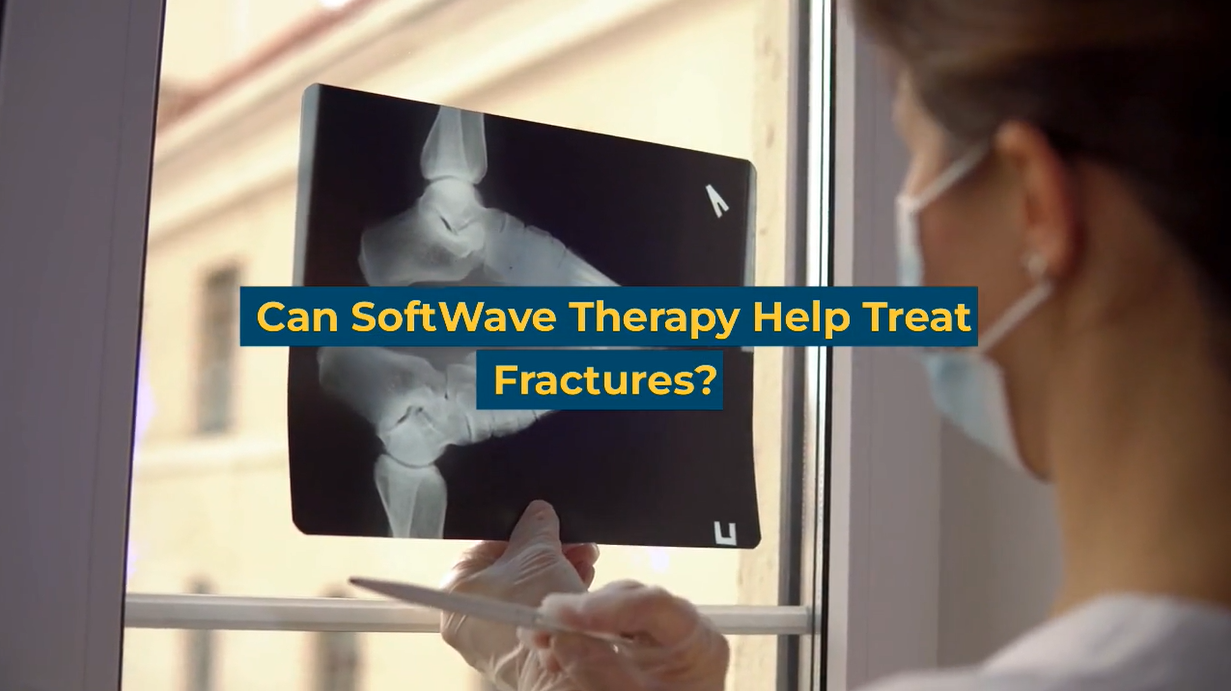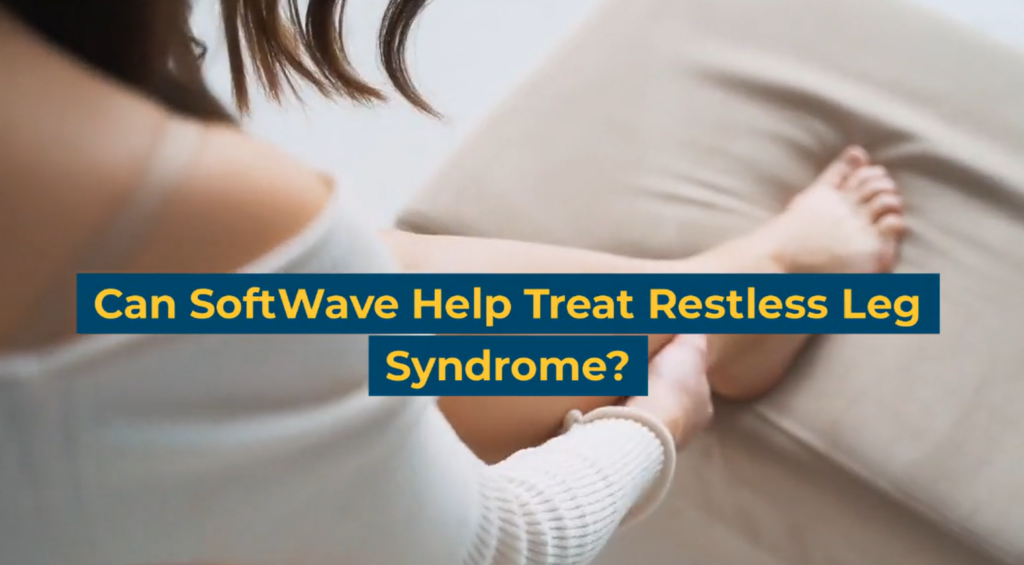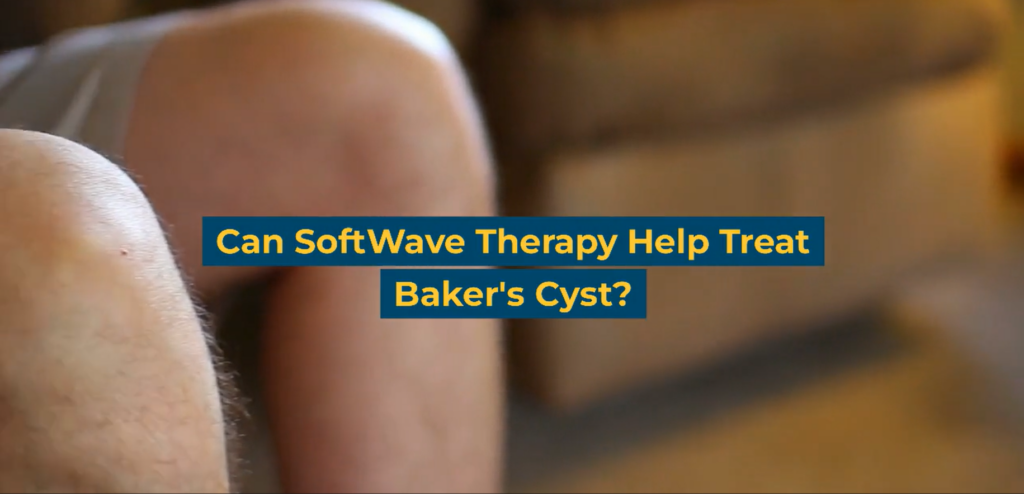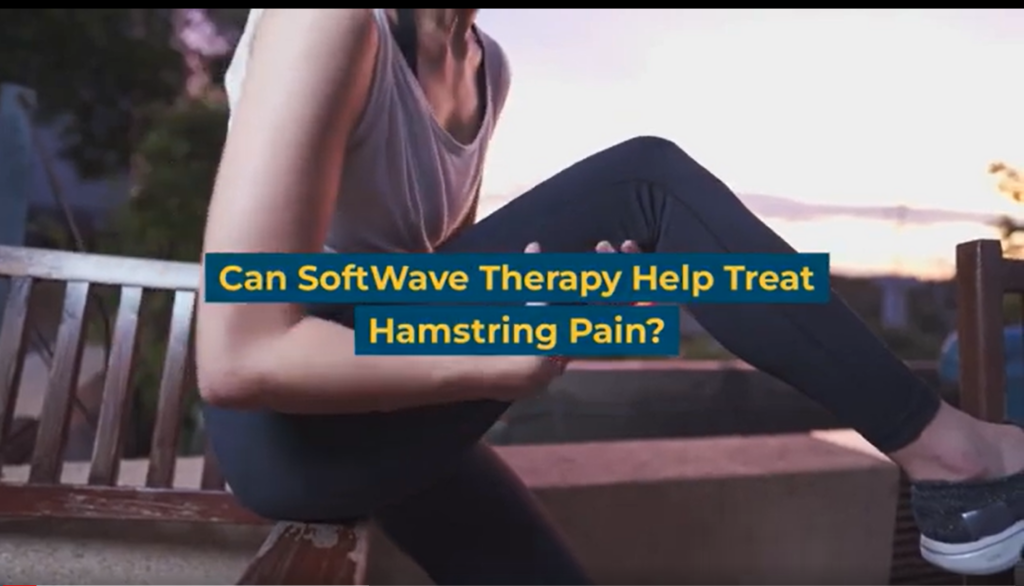Can SoftWave Help Treat Fractures?
Fractures, or broken bones, are common injuries that can range from mild to severe. While most fractures heal on their own with time, some may require additional treatment to ensure proper healing and reduce the risk of complications. With fractures posing unique challenges and complications, SoftWave therapy offers a way to accelerate the healing process for improved fracture treatment outcomes. By delivering acoustic waves directly to the affected area, SoftWave therapy stimulates the body’s natural healing mechanisms, promoting bone regeneration and reducing inflammation.
New Patient Special
Try SoftWave for just $69 at a clinic near you and learn if you’re a candidate for full treatment

Understanding Fractures: Causes & Symptoms
When a bone is subjected to more force than it can bear, it can lead to a fracture. Traumatic events like falls, accidents, or sports injuries, as well as conditions such as osteoporosis or weakened bones due to age or underlying medical conditions can cause fractures.
Symptoms of fractures may vary depending on the type and location of the fracture. Common indicators include localized pain, swelling, bruising, deformity, and difficulty moving or bearing weight on the affected area. At times, the injury may produce a distinct popping or cracking sound. Regardless of the fracture type, the healing process can be complex, often requiring extended periods of immobilization and rehabilitation.
SoftWave Therapy: How It Works for Fractures
SoftWave therapy harnesses the power of acoustic waves, also known as shockwaves, to stimulate bone regeneration and enhance the healing process. By delivering broad-focused shockwaves directly to the fractured site, SoftWave therapy effectively accelerates the formation of new blood vessels, leading to increased blood flow and improved nutrient delivery to the injured area. This enhanced blood circulation plays a vital role in facilitating the deposition of new bone tissue, ultimately resulting in faster healing and reduced recovery times.
A study published in the Journal of Orthopaedic Research demonstrates the significant impact of SoftWave therapy on bone regeneration. It reveals that SoftWave therapy effectively increases the expression of bone-forming genes and enhances the proliferation of bone-forming cells. Furthermore, research conducted in the International Journal of Surgery underscores the efficacy of SoftWave therapy in treating bone disorders. This study highlights that SoftWave therapy stimulates the production of growth factors and cytokines, crucial elements in the healing process. By increasing the concentration of these factors, SoftWave therapy promotes tissue regeneration and accelerates the healing of fractures.
SoftWave treatments are performed on an outpatient basis and typically last between 15 and 30 minutes. Not only has SoftWave therapy been proven to accelerate the healing process, but it also effectively reduces pain in patients with fractures, enabling them to return to their normal activities more quickly.
Types of Fractures Treated with SoftWave Therapy
SoftWave therapy is a versatile treatment option that can be used to treat various types of fractures, including acute and chronic fractures. Acute fractures are caused by sudden injury or trauma, while chronic fractures result from repeated stress or strain over time.
SoftWave therapy is particularly useful in treating stress fractures, which are commonly seen in athletes and individuals who engage in high-impact physical activities. In addition, SoftWave therapy has been shown to be effective in treating non-union fractures, which occur when bones fail to heal properly after an injury. SoftWave therapy promotes the production of new bone tissue, facilitating the healing process and ultimately leading to successful bone fusion.
Overall, SoftWave therapy is a safe and effective treatment option for a wide range of fractures. Its non-invasive nature and ability to accelerate the healing process make it a valuable option for patients seeking a faster recovery time and reduced pain.
Benefits of SoftWave Therapy for Fracture Treatment
The advantages of SoftWave therapy in fracture treatment are noteworthy. Firstly, as a non-invasive procedure, it eliminates the need for surgical interventions, reducing associated risks and potential complications. Moreover, SoftWave therapy has been shown to significantly speed up healing times, allowing individuals to resume their daily activities sooner. This treatment modality also offers improved outcomes, with studies reporting enhanced fracture healing rates and reduced pain levels.
Speed Up Your Healing with SoftWave Therapy Today
If you’re looking to speed up your healing time and reduce pain associated with a fracture, SoftWave therapy may be the right treatment option for you. With its proven efficacy and minimal side effects, SoftWave therapy may be the key to a faster, smoother recovery. However, it is crucial to consult with a healthcare professional to determine the suitability of SoftWave therapy for individual cases. They can assess the specific fracture type, severity, and patient characteristics to tailor the treatment plan accordingly.
Find your SoftWave provider and schedule an appointment today for your initial assessment and treatment.
Disclaimer: The information provided in this blog is for educational and informational purposes only and is not intended as a substitute for professional medical advice, diagnosis, or treatment. The content provided in this blog should not be used to diagnose or treat any health problems or illnesses. Always consult with a qualified healthcare professional before making any changes to your healthcare routine or treatment plan.
New Patient Special
Try SoftWave for just $69 at a clinic near you. No drugs. No surgery. Just relief.





